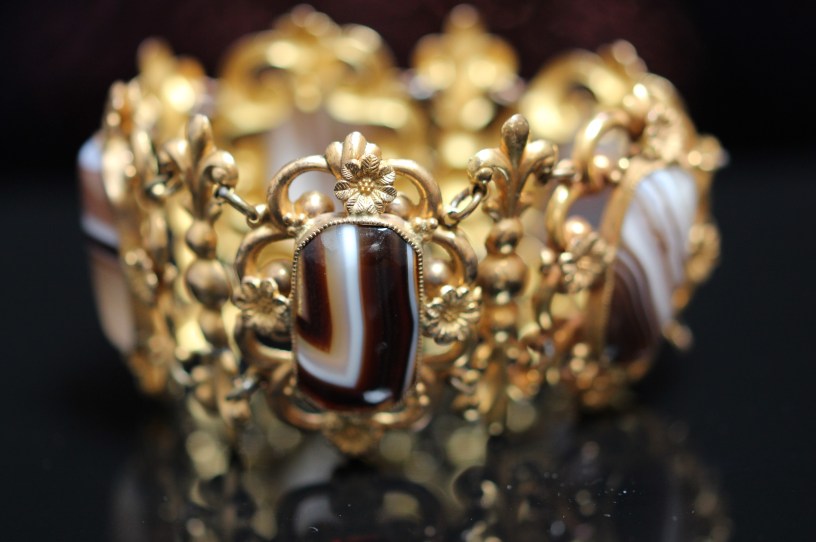Pinchbeck was an alloy of copper and zinc which was developed as a substitute for gold in around 1720 by Christopher Pinchbeck. Christopher was described as a ‘clock, watchmaker and toyman’. In Georgian England, a ‘toyman’ was a person who sold luxury trinkets, like snuffboxes, watches, chatelaines and etuis, buckles, hair combs, cane heads, coat buttons, clasps and so on. Christopher also specialised in musical automata and atronomico-musical clocks.

Christopher‘s pinchbeck was an alloy of approximately 87% copper and 13% zinc and resulted in a very good imitation of gold. It was durable, long lasting and didn’t tarnish. It is believed that some pieces also received a wash of gold. Pinchbeck also developed an ‘Artificial Stone, call’d the Pinchbeck Diamond, which he sets in Gold Rings’ and which he claimed could not be distinguished from rose cut diamonds. Pinchbeck was used for those customers who couldn’t afford gold or who didn’t want to risk their valuable gold jewellery when travelling.

Christopher died in 1732 and his son, Edward, inherited the business and the secret formula for pinchbeck. Another son, Christopher, carried on a similar business and was described as ‘the noted Pinchbeck, buckle and knick-knack maker to the King’.
The Pinchbecks kept their formula secret. Edward Pinchbeck died in 1783 and supposedly the formula died with him but others attempted to copy the alloy. In 1733, Edward inserted a notice in the Daily Post warning the public to beware of imposters claiming to sell items made of pinchbeck. A French jeweller, called Leblanc produced an alloy of similar quality and made a lot of jewellery but French goldsmiths took legal action against him and the alloy could only be used for items such as shoe buckles and buttons and not jewellery.

Many types of non-gold metals items of jewellery are described as being pinchbeck but it was only really available in the 18th century. Pinchbeck items were sold in the USA between 1755 until around 1775. Other versions of a copper-zinc alloy were made in an attempt to copy the Pinchbecks but some versions tarnished easily. One copy was ‘Mosaic Gold. Another was ‘Oroide’ gold by Charles Courtney Rowe which was launched in 1873. Another copy was ‘Dorian’ which was registered in 1888, comprising the copper-zinc alloy but with a 20-22ct gold plating. ‘Abyssinian Gold’, introduced in 1868, used an alloy of aluminium and copper, looked like 12 carat gold and did not need gilding.
In the 1840s, electroplating of gold became available commercially and in 1854, legislation was enacted to allow for low carat gold such as 9ct to be used in jewellery and pinchbeck imitations began to lose favour.

